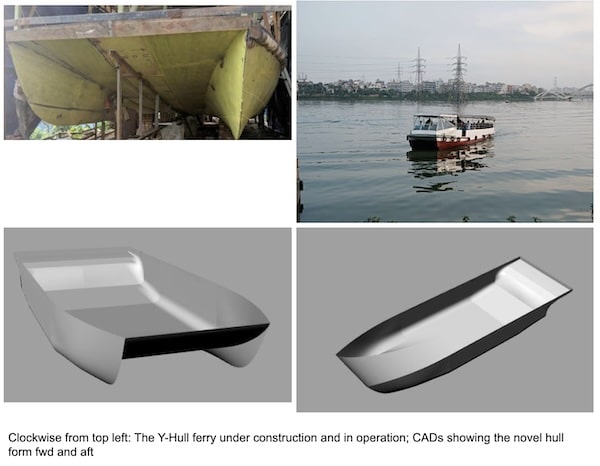Innovative Y-Hull Design Promises Maritime Efficiency

Glasgow-based EcoNavis Solutions has partnered with Singapore’s ShipDyn to revolutionize vessel design with their new Y-Hull technology. This innovative hull form merges the stability and spaciousness of a catamaran with the efficiency of a monohull, aiming to enhance passenger comfort and reduce fuel consumption. The Y-Hull’s unique structure features twin forward demi-hulls that converge into a single monohull, allowing for streamlined operation with just one engine.
Transforming Maritime Design for Sustainability
The Y-Hull design is not just a technical achievement; it addresses real-world safety concerns. ShipDyn’s founder, Amitavo Wye, was inspired to create this hull form after witnessing a passenger vessel capsize in Bangladesh. The resulting 13-meter steel prototype has already begun operations, successfully ferrying passengers while achieving a remarkable 25% reduction in fuel consumption compared to traditional monohull vessels of similar size.
Wye emphasizes that the Y-Hull offers more than just stability; it also provides significant environmental benefits. The hull’s design minimizes wake impact, which is crucial for protecting shorelines from erosion. This makes it particularly relevant for operators in environmentally sensitive areas. Dr. Batuhan Aktas, CEO of EcoNavis Solutions, sees potential applications for the Y-Hull in crew transfer vessels, especially in the offshore wind sector, where fuel efficiency is paramount.
To further refine the Y-Hull, EcoNavis and ShipDyn are employing advanced computational fluid dynamics and conducting towing tank tests. These efforts aim to validate the hull’s performance and optimize its geometry. The partnership has also secured initial funding through the UK Government’s Transport Research and Innovation Grant, with hopes for further financial support to expedite market entry.
Broad Applications and Future Prospects
The Y-Hull’s innovative design opens doors to various maritime sectors, including leisure marine, passenger transport, and commercial shipping. Its ability to reduce wake impact could significantly benefit operations in confined waterways, where environmental considerations are critical. Moreover, larger vessels like tankers could see substantial reductions in fuel consumption and emissions, with estimates suggesting that a 240-meter tanker could save approximately 4,500 tons of CO2 annually.
The Y-Hull also presents retrofitting opportunities, allowing existing vessels to enhance their efficiency and stability without undergoing complete overhauls. This adaptability could make the Y-Hull a game-changer in maritime design, addressing both safety and sustainability challenges in the industry.
Wye concludes that this collaboration between ShipDyn and EcoNavis combines innovative design with market access, paving the way for the Y-Hull to become a commercial reality. As the maritime industry faces increasing pressure to improve performance and sustainability, the Y-Hull stands out as a promising solution.
